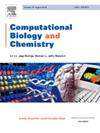An insight into in silico strategies used for exploration of medicinal utility and toxicology of nanomaterials
IF 2.6
4区 生物学
Q2 BIOLOGY
引用次数: 0
Abstract
Nanomaterials (NMs) and the exploration of their comprehensive uses is an emerging research area of interest. They have improved physicochemical and biological properties and diverse functionality owing to their unique shape and size and therefore they are being explored for their enormous uses, particularly as medicinal and therapeutic agents. Nanoparticles (NPs) including metal and metal oxide-based NPs have received substantial consideration because of their biological applications. Computer-aided drug design (CADD) involving different strategies like homology modelling, molecular docking, virtual screening (VS), quantitative structure-activity relationship (QSAR) etc. and virtual screening hold significant importance in CADD used for lead identification and target identification. Despite holding importance, there are very few computational studies undertaken so far to explore their binding to the target proteins and macromolecules. Although the structural properties of nanomaterials are well documented, it is worthwhile to know how they interact with the target proteins making it a pragmatic issue for comprehension. This review discusses some important computational strategies like molecular docking and simulation, Nano-QSAR, quantum chemical calculations based on Density functional Theory (DFT) and computational nanotoxicology. Nano-QSAR modelling, based on semiempirical calculations and computational simulation can be useful for biomedical applications, whereas the DFT calculations make it possible to know about the behaviour of the material by calculations based on quantum mechanics, without the requirement of higher-order material properties. Other than the beneficial interactions, it is also important to know the hazardous consequences of engineered nanostructures and NPs can penetrate more deeply into the human body, and computational nanotoxicology has emerged as a potential strategy to predict the delirious effects of NMs. Although computational tools are helpful, yet more studies like in vitro assays are still required to get the complete picture, which is essential in the development of potent and safe drug entities.
求助全文
约1分钟内获得全文
求助全文
来源期刊

Computational Biology and Chemistry
生物-计算机:跨学科应用
CiteScore
6.10
自引率
3.20%
发文量
142
审稿时长
24 days
期刊介绍:
Computational Biology and Chemistry publishes original research papers and review articles in all areas of computational life sciences. High quality research contributions with a major computational component in the areas of nucleic acid and protein sequence research, molecular evolution, molecular genetics (functional genomics and proteomics), theory and practice of either biology-specific or chemical-biology-specific modeling, and structural biology of nucleic acids and proteins are particularly welcome. Exceptionally high quality research work in bioinformatics, systems biology, ecology, computational pharmacology, metabolism, biomedical engineering, epidemiology, and statistical genetics will also be considered.
Given their inherent uncertainty, protein modeling and molecular docking studies should be thoroughly validated. In the absence of experimental results for validation, the use of molecular dynamics simulations along with detailed free energy calculations, for example, should be used as complementary techniques to support the major conclusions. Submissions of premature modeling exercises without additional biological insights will not be considered.
Review articles will generally be commissioned by the editors and should not be submitted to the journal without explicit invitation. However prospective authors are welcome to send a brief (one to three pages) synopsis, which will be evaluated by the editors.
 求助内容:
求助内容: 应助结果提醒方式:
应助结果提醒方式:


